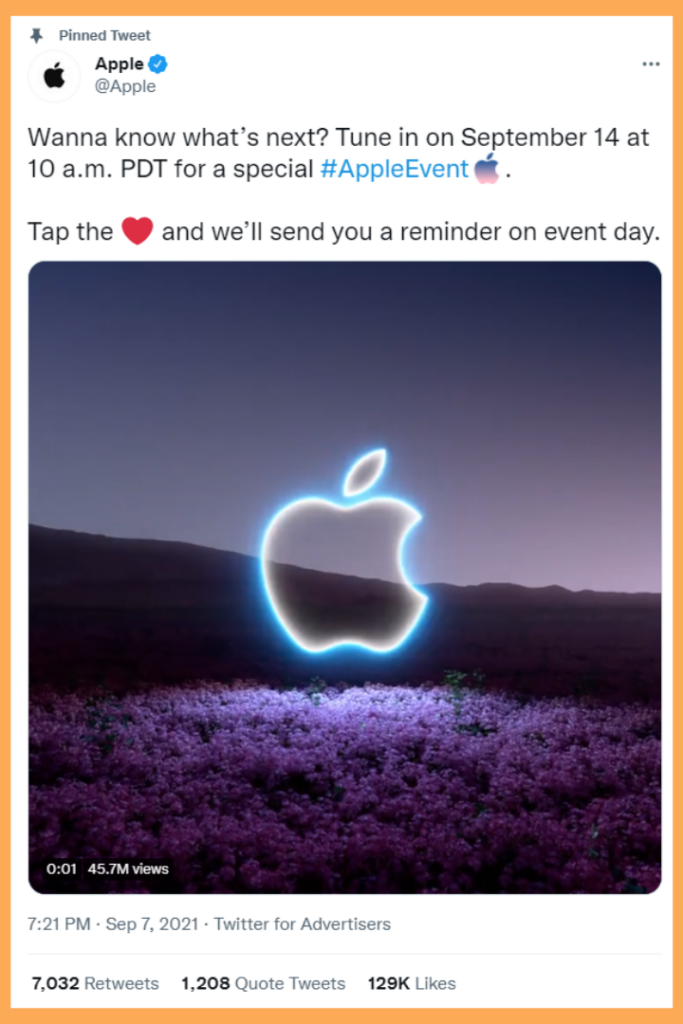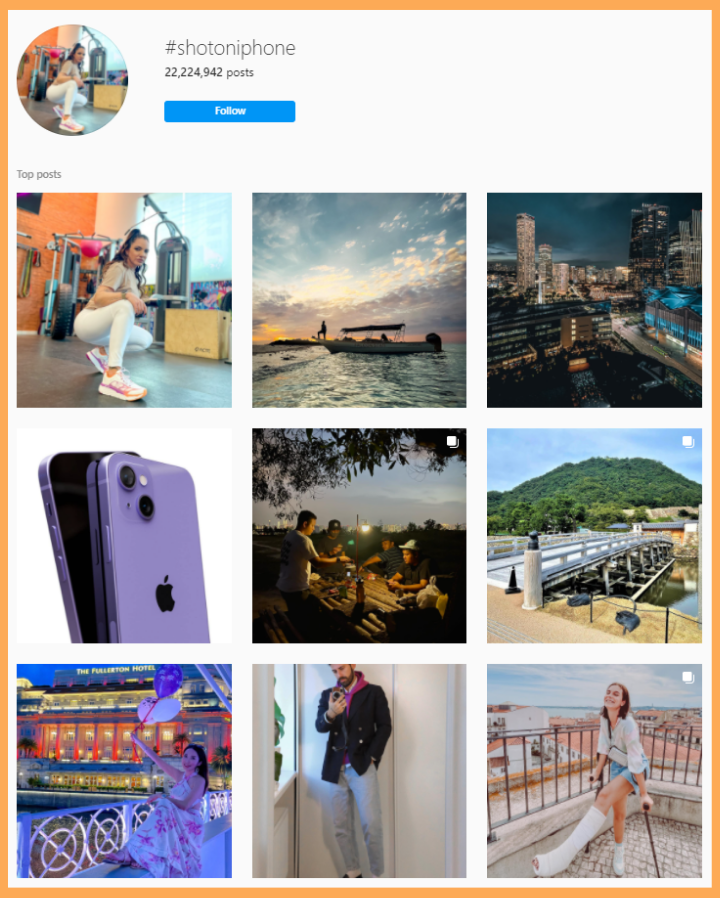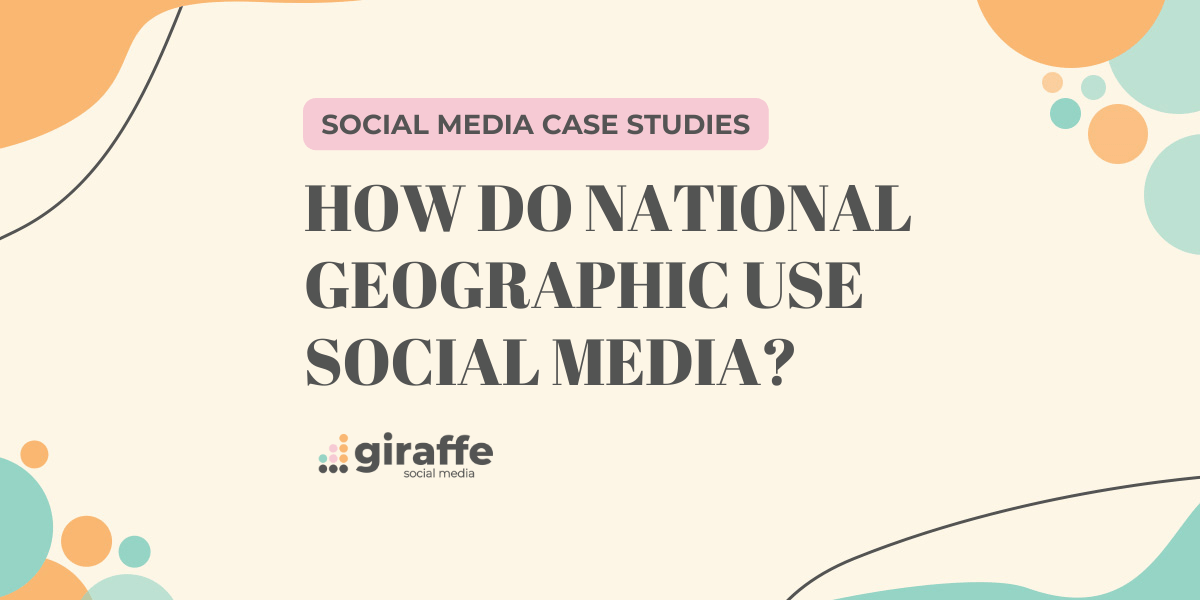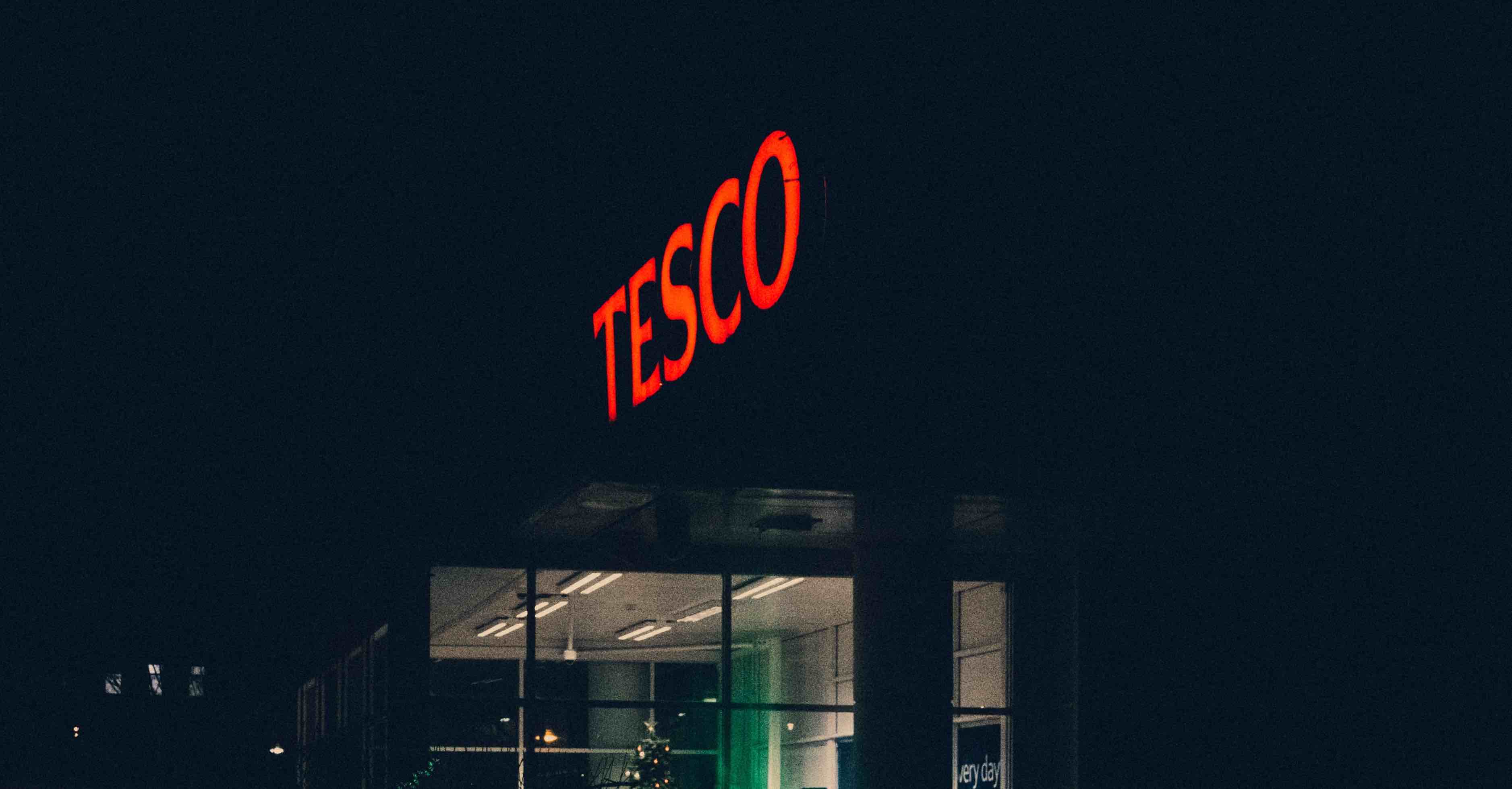Apple has become one of the most world-renowned names in consumer electronics, cloud-based services, and computer technology. With the prevalence of the Apple brand in modern-day life, it’s unusual for Apple to not have a huge social media presence. Apple’s branding and products follow a minimalist, ‘less is more’ approach, and that certainly applies to their social media marketing as well. In this case study, we’re looking at Apple on social media and what we think works well.
Since its creation back in 1976, Apple Inc. has become one of the world’s leading technological innovators. Through incredible highs and lows, the company has constantly proven time and time again that they are unwilling to follow the status quo. That very reluctance to tread the same path as other successful businesses has been transferred directly to their social media channels.
The truth is that Apple can do, or rather not do, something completely different on social media purely because of what an extensive and influential corporation they are. Due to their substantial and dedicated consumer base and an astronomically large pile of partners to use and market across their services, Apple use social media in their own way and to their benefit.
Apple’s Social Media Following
Facebook Apple – 13m likes; Apple TV – 28m likes; App Store – 14m likes; Apple Music – 3.9m likes; Apple Books – 119k likes; Apple Podcasts – 29k likes.
Twitter @Apple – 6.7m followers; @AppleMusic – 9.9m followers; @AppStore – 4.4m followers; @AppleSupport – 1.3m followers; @AppleTV – 1.3m followers; @AppleArcade – 76.6k followers; @AppleNews – 313k followers; @applepodcasts – 617.7k followers.
Instagram @Apple – 26.1m followers; @applemusic – 4.5m followers; @appletv – 2.6m followers; @applebooks – 361k followers; @applefitnessplus – 99.6k followers; @appletvplus – 78.3k followers; @applenews – 48.3k followers.
YouTube Apple – 14.5m subscribers; Apple Support – 970k subscribers; Apple TV – 942k subscribers; Apple UK – 388k subscribers; and local accounts.
LinkedIn Apple – 14.5m followers.
For a global company worth trillions, it is at first surprising that Apple’s social media presence is not vast. However, thinking deeper, it fits perfectly with their brand persona. The main @Apple Twitter account has 6.7m followers and is following 0 accounts, and the @Apple Instagram account is following 9 accounts, all of which are associated with Apple itself — fitting for a company that prides itself on innovation and not following the crowd.
Very little central social media
When exploring how Apple use social media, one of the most obvious and oddest things is that they have very little in the way of central accounts. This seems to be the case across the most prominent social networking sites. Instead of having a profile full of Tweets from over the years, Apple keeps its Twitter feed clear and minimal. @Apple on Twitter lays almost entirely unused on Twitter besides 1 pinned Tweet (as of 13 September 2021) regarding “a special #AppleEvent” (a custom branded hashtag featuring a gradient Apple logo) and an accompanying video. But this single post still managed to rack up engagement with 1.9k replies, 7k retweets, 1.2k quote tweets, 129k likes, and 45.7m video views – and the numbers continue to climb.

On Facebook, the centralised Apple page is unverified (yet has amassed 13.5m likes) and the only updates are of updated cover photos to tease and promote upcoming products.
In more recent years Apple have begun to integrate social media into their digital marketing strategy with specific services in mind – at least where their partners are concerned. Interestingly, the sub-pages for Apple on Facebook (for Apple TV, Podcasts, Books, Music, and the App Store) are all verified – unlike the central account. These pages are all actively posting – also unlike the central account – with the Apple TV page seeing the most engagement and highest number of likes (28m).
In a way, this approach makes a lot of sense – for Apple. Apple use their central accounts sparingly to focus on 1 specific product launch/event/etc, generating hype for new releases, whereas the accounts for sub-brands and products are more active and ongoing. Apple’s product releases and events happen at roughly the same time each year, with the central account supporting like clockwork.
Twitter as a customer service tool
One aspect of modern social media marketing that Apple have been more willing to tap into is social media as a customer service tool. As an immediate communication medium that provides transparency, social media provides the perfect platform for customer service.
The @AppleSupport Twitter profile is “here to provide tips, tricks and helpful information when you need it most” and is “available every day to answer your questions, from 5am – 8pm Pacific.” Although US-centric, this support account answers support queries from users all over the world about all Apple products. Apple’s support website features a whole host of support articles that are frequently linked and referenced in customer service replies, as well as redirecting conversations to DMs for customers to provide detailed information.
A good social media customer service strategy is key for customer-facing brands. Consumers often turn to social media before traditional channels (aka calling or emailing customer support) as they assume a faster response time. Depending on the size of your business, create a customer service plan – including minimum response time – that makes your customers feel heard and supported.
A viral campaign that stood the test of time
Apple’s campaign #ShotOniPhone aimed to showcase what the iPhone can do. Starting life as a UGC-focused “quest to create awareness around the iPhone’s stunning camera quality,” calling all iPhone users to submit their best iPhone photography, the campaign has since evolved into somewhat of an online phenomenon. The hashtag #ShotOniPhone on Instagram has garnered a staggering 22.2m posts to date from Apple enthusiasts showcasing their photography work. The hashtag helps photographers get their work seen, as well as promote the iPhone – a win-win situation.

In 2019, singer Selena Gomez released a new music video for the first time in over a year – and it was shot on the iPhone 11 Pro. The video for the hit song ‘Lose You To Love Me’ features the hashtag “shotoniphone” in the YouTube description, indicating that the video is partnered with Apple, and has reached 366m views (as of September 2021). Partnering with Gomez was a smart move, especially for a much-anticipated music video, with stunning visuals which encapsulate the quality of the iPhone.
Why Apple can get away with what others can’t
Apple Inc. is able to have this approach to social media because of the sheer size of their corporation. Unlike other companies that rely on social media to promote the launch of new products, engage with customers, and make announcements, Apple’s needs are mostly covered by traditional media and big release events. They simply don’t need to undertake a contemporary social media strategy, they have the freedom to make their own rules. However, this is a strategy in itself, playing perfectly into Apple’s minimalist, product-focused persona.
What can we learn from how Apple uses social media?
It’s generally not recommended for businesses to take too much from the way that Apple run their social media channels – it simply will not work for small brands. One key takeaway, however, is that not all social networks are right for each business. The centralised Apple account is used extremely sparingly on Twitter and Facebook, whereas the @apple account is active on Instagram, primarily promoting the #ShotOniPhone campaign. Companies should be willing to invest time and energy into identifying which networks their customers are most active on, and devote a significant proportion of their social media marketing strategy to those channels.
Read more of our social media case studies to learn social media tips from all your favourite brands.
Editor’s note: This article was originally published in March 2016 and has been updated for accuracy and relevance in November 2022.






